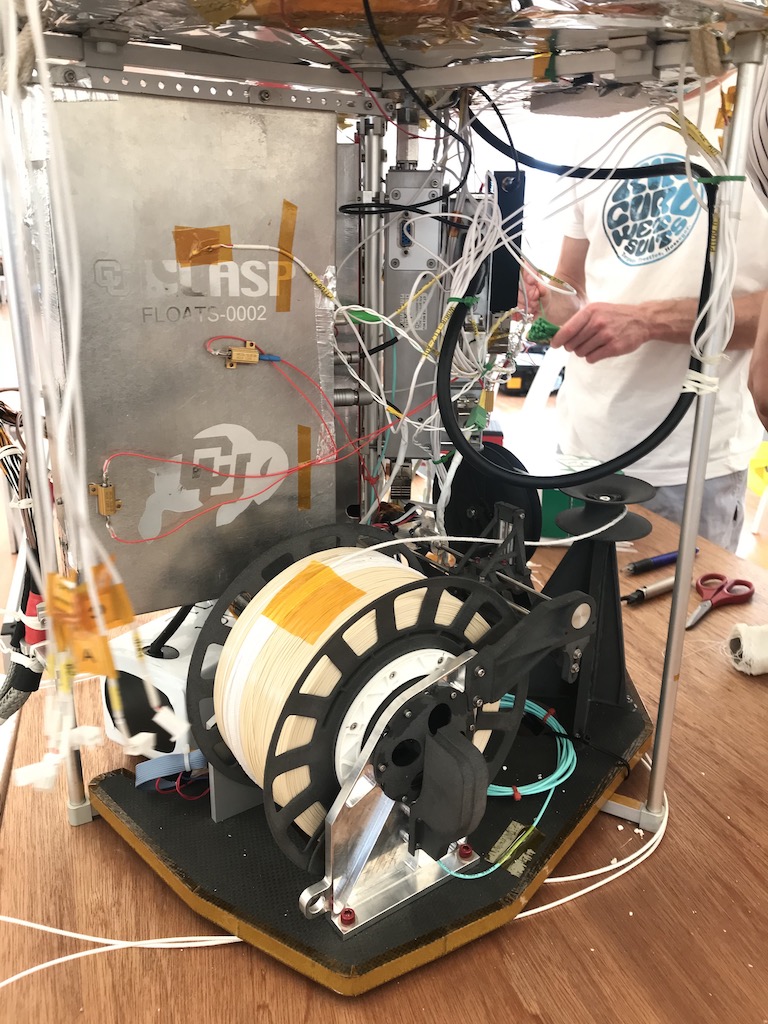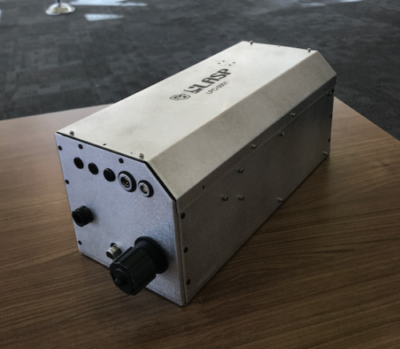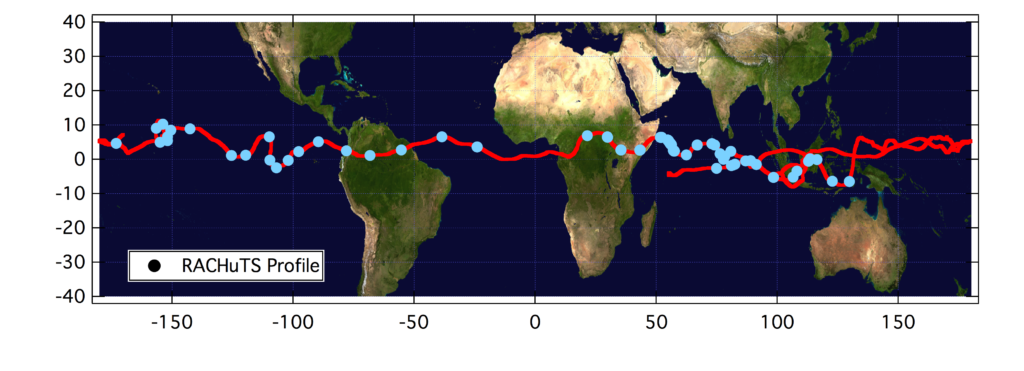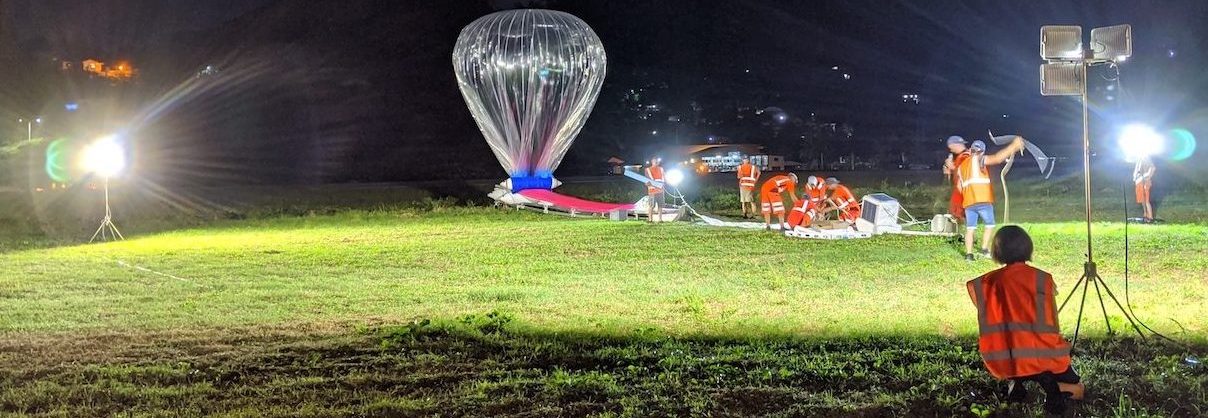
FLOATS
Fiber-optic Laser Operated Atmospheric Temperature Sensor
The Fiberoptic Laser Operated Temperature Sensor (FLOATS) is a new instrument that makes high spatial and temporal resolution measurements of temperature profiles throughout the TTL. The profiles from this instrument are comparable in detail to those obtained from radiosondes, however the density of measurements is closer to that of satellite sounders. These high-resolution profiles directly resolve fine-scale structures and waves with vertical length scales down to 5m and the quasi-Lagrangian nature of the balloons coupled with the high time resolution (~1 minute) measurements will capture the evolution and vertical propagation and phase speed spectrum of these waves.
The instrument operates by deploying a 1600m long fiber optic cable from the balloon gondola once it has reached a stable float altitude. A laser in the balloon gondola inject thousands of pulses of light into the suspended fiber every second. A small fraction of the light from each pulse is scattered from the glass core of the fiber optic cable, and returns back up the fiber to the gondola. By measuring the intensity of this scattered light at two different wavelengths, and the time it takes for the light to return to the gondola, the temperature along the fiber can be determined every meter.

LPC

LASP Particle Counter
LPC is a high flow, Laser based, Optical Particle Counter, that measures aerosol size distributions of particles with diameters between 0.25 – 20µm. The instrument is specifically designed for low particle concentrations in the stratosphere with a 20 Liter/minute flow rate, providing sensitivity down to 10-4 particles/cm-3 . It provides measurements of the lower stratospheric background aerosol size distributions as well as occasional larger particles of unknown origin.
The LPC is a variant of the new LASP sounding instrument that builds on the heritage of U. Wyoming particle instruments.
RACHuTS
Reeldown Aerosol Cloud HUmidity and Temperature Sensor
The newly developed Reeldown Aerosol Cloud Humidity and Temperature Sensor is a profiling instrument that probes the top two kilometers of the Tropical Tropopause Layer (TTL). The instrument consists of a reeling system within the balloon gondola, and a 2kg sub-gondola containing three sensors (water vapor, clouds/aerosol and temperature/pressure) that can be lowered 2km below the main balloon in flight. RACHuTS characterizes the thermal structure of the TTL and the cold point, water vapor, dehydration and cloud formation in the TTL, and the wave structure with in the TTL. It provides unmatched vertical resolution within the TTL and an unprecedented number of profiles through the TTL. The sub gondola instrument payload consists of:
- Water Vapor, accuracy better than < 0.5ppm (FLASH-B)
- Temperature, precision of 0.1K (TSEN)
- Aerosol and Cloud Particles, 0.5 – 20 μm (ROPC)
RACHuTS will be deployed 3-4 times per night, providing 6-8 profiles each day, 500 – 1000 profiles of the TTL for each balloon during each campaign, for a total of 5000 profiles during mission.


ROC
Radio Occultation Profiler
ROC is a GPS Radio Occultation profiler that provides a high-density of radio occultation temperature profiles in the region surrounding the balloon. It provides observations of fine vertical scale, moderate-to-large horizontal scale waves in full 3D. Measurements will permit accurate retrievals of the momentum flux, fine vertical structure, and phase speeds of waves as they dissipate in lower stratosphere QBO shear zones.

